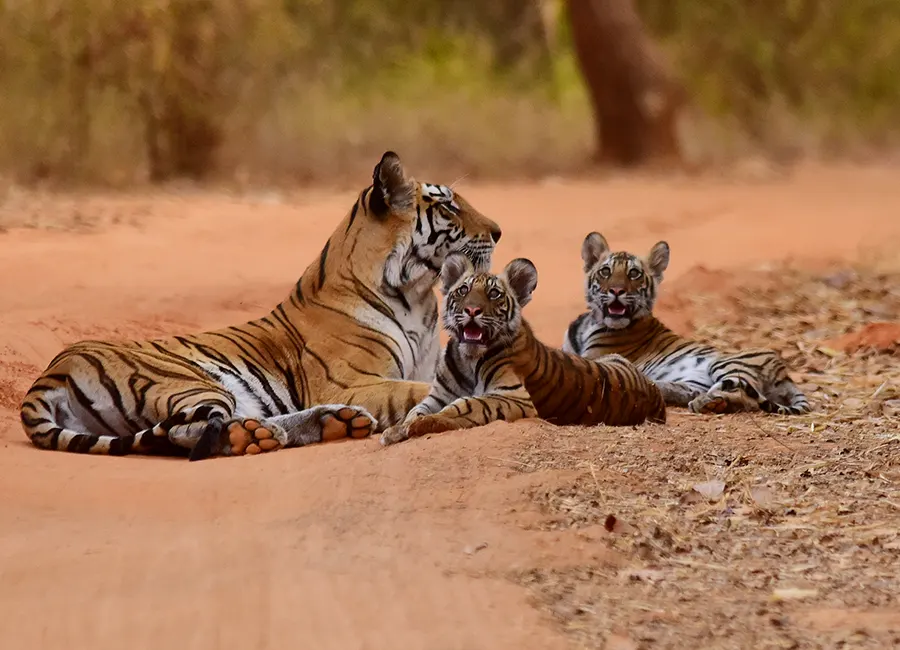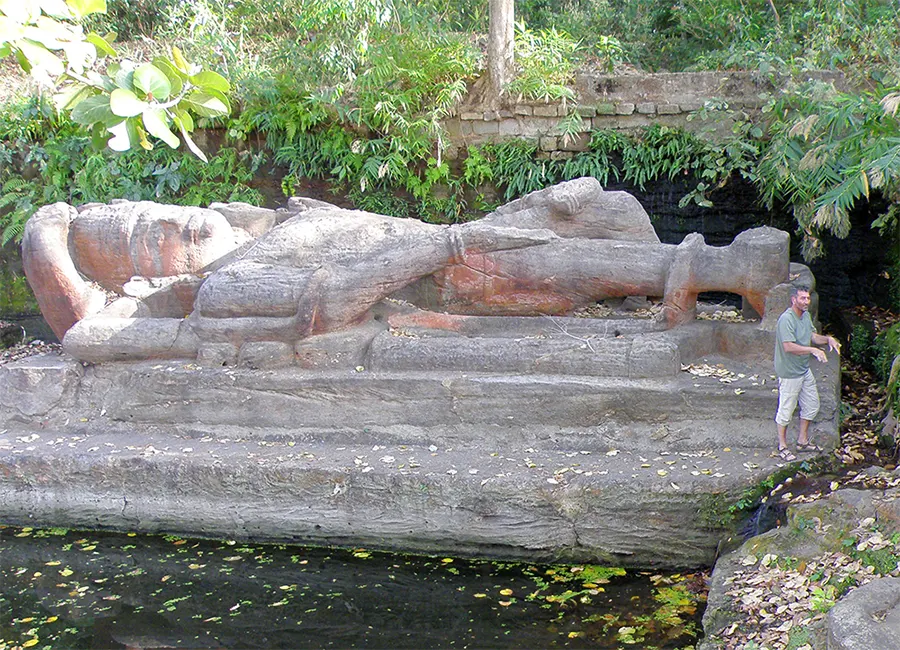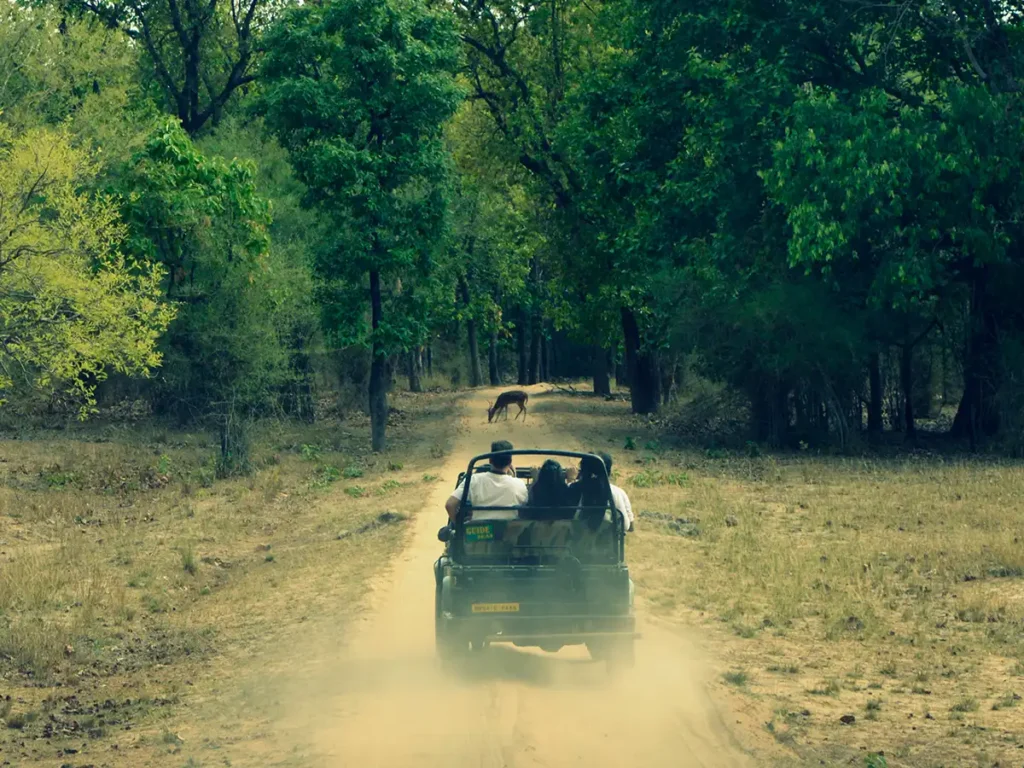Introduction: Setting the Scene
Nestled in the heart of Madhya Pradesh, Bandhavgarh National Park is a place where India’s ancient past and vibrant wildlife converge in remarkable harmony. While it’s famed for its dense population of Bengal tigers, Bandhavgarh is much more than a wildlife sanctuary. It’s a living chronicle of Indian history, with roots that stretch back thousands of years, entwining mythology, royal power, and conservation legacy.
Legend has it that Bandhavgarh was gifted to Lakshmana by his brother, Lord Rama, upon his return from Lanka—a testament of brotherly love that has shaped the region’s identity for centuries. Perched atop dramatic cliffs, the Bandhavgarh Fort bears witness to this myth and stands as a sentinel over a land that has seen everything from prehistoric artists and powerful dynasties to royal hunters and modern-day conservationists.
Today, Bandhavgarh’s story unfolds along well-worn trails and ancient pathways. For visitors, each step offers a glimpse into a tapestry woven from human ambition, spiritual devotion, and a growing understanding of nature’s value. This introduction to Bandhavgarh reveals not just a reserve but a remarkable journey through time—where history and nature merge to form one of India’s most unique and awe-inspiring landscapes.

Tiger with cubs @ Bandhabgarh National Park
Mythological Roots: Bandhavgarh’s Legendary Origins
In the myths and legends of India, Bandhavgarh is revered as a land touched by the divine. Its name, which means “Brother’s Fort,” is deeply rooted in the epic Ramayana. According to legend, after his victory over Ravana in Lanka, Lord Rama gifted this territory to his brother Lakshmana as a symbol of trust and protection. This is where the fortress of Bandhavgarh was established, serving as both a spiritual and strategic stronghold.
This connection to the Ramayana has instilled Bandhavgarh with a sense of sacredness that transcends centuries, imbuing its forests and rocky cliffs with cultural significance. For many, Bandhavgarh is a place of pilgrimage, where the mythology of ancient India finds a tangible form amid the rugged beauty of the Vindhya mountains. The mythological essence of Bandhavgarh provides a profound backdrop to its history, turning each visit into a journey into the heart of India’s cultural heritage.
Ancient Settlements and Archaeological Marvels
Beyond its mythological significance, Bandhavgarh holds an extraordinary archaeological legacy that dates back thousands of years. Archaeological findings reveal that humans have called this region home since the Stone Age, with remnants of tools and cave paintings scattered throughout the park. These ancient artworks depict scenes of hunting and daily life, offering glimpses into the lives of prehistoric communities that once thrived here.
The fort itself, towering above Bandhavgarh’s forests, is one of India’s oldest known fortifications. Its walls and pathways bear the marks of centuries of history, serving as a silent witness to the passage of dynasties, from early Hindu settlers to medieval rulers who expanded and fortified the structure. The fort complex is dotted with ancient Hindu temples and rock-cut caves, adorned with inscriptions and sculptures that date back to the 1st century BCE. These archaeological treasures showcase the region’s historical and religious significance, portraying Bandhavgarh as a site where the sacred and the strategic converged long before it became a haven for wildlife.

Shesh Shaiya @ Bandhabgarh National Park
Rise of the Fort: Strategic and Cultural Flourishing in the Medieval Era
Bandhavgarh’s strategic location and natural defenses made it a prized possession for rulers in medieval India, sparking a new era of construction and cultural development. During the 10th century, the Kalchuri dynasty transformed the fort into a thriving center of power. Their reign marked a period of architectural and cultural flourishing, during which Bandhavgarh became not only a military stronghold but also a hub of religious activity and artistic expression.
Under Kalchuri patronage, the fort expanded significantly with the addition of massive walls, gates, watchtowers, and royal quarters. The rulers commissioned intricate temples and sculptures, including the famous Shesha Shaiya, a colossal reclining Vishnu carved from rock, which remains a marvel of Indian sculpture. The Kalchuris’ influence is visible in every corner of the fort, from the stone inscriptions detailing royal decrees to the delicate carvings adorning temple facades. This medieval period turned Bandhavgarh into a vibrant cultural center, leaving behind architectural wonders that still captivate historians, archaeologists, and visitors alike.
Royal Hunting Grounds: Transformation Under Rewa’s Maharajas
In the 18th and 19th centuries, Bandhavgarh entered a new phase as it was incorporated into the princely state of Rewa. The dense forests surrounding the fort, once a natural fortress, became the exclusive hunting grounds of Rewa’s Maharajas, marking a significant shift in Bandhavgarh’s purpose and role. This era brought a mix of grandeur and exclusivity, as the region became a retreat for the elite to demonstrate their hunting prowess and entertain visiting dignitaries, including British officials and members of the British royal family.
One of the most iconic moments from this era was the discovery of the rare white tiger, Mohan, by Maharaja Martand Singh in 1951. This white tiger became famous worldwide, symbolizing Bandhavgarh’s unique wildlife heritage and sparking early conservation interests. Although the hunting era introduced significant changes, it laid the groundwork for Bandhavgarh’s eventual transformation into a sanctuary. The royal lodges, tracking knowledge, and game management practices developed during this period would later serve as valuable assets when Bandhavgarh made its transition from a royal hunting ground to a protected national park dedicated to wildlife conservation.
From Hunting Grounds to Conservation: The Birth of Bandhavgarh National Park
The transformation of Bandhavgarh from a royal hunting reserve to a national park marked a critical turning point in the park’s history and India’s conservation efforts. Recognizing the region’s unique biodiversity and the alarming decline in tiger populations, Bandhavgarh was designated as a national park in 1968. Shortly afterward, it became one of the focal points of Project Tiger, launched in 1973 as a pioneering national initiative to protect India’s dwindling tiger population.
This shift was both practical and symbolic, as it marked the beginning of scientific wildlife management in Bandhavgarh. The park’s core areas were set aside for tigers, with buffer zones established to balance human and wildlife needs. Anti-poaching measures, habitat restoration projects, and community engagement initiatives became essential to the park’s mission, gradually transforming Bandhavgarh into a sanctuary for endangered species. Today, this tiger reserve is not only a critical haven for Bengal tigers but also a model for conservation efforts across India, showcasing how a former hunting ground can evolve into a world-renowned wildlife sanctuary.
Bandhavgarh Today: A Harmonious Blend of Heritage and Ecology
Today, Bandhavgarh stands as a remarkable example of India’s commitment to preserving both its natural and cultural heritage. The national park covers over 1,500 square kilometers of diverse landscapes, from dense forests to grasslands and rocky cliffs, providing a rich habitat for a variety of species. Beyond its role as a tiger sanctuary, Bandhavgarh also protects an incredible diversity of wildlife, including leopards, deer, sloth bears, and more than 250 species of birds.
But Bandhavgarh is more than a haven for wildlife—it is also a historical treasure trove. The ancient fort and temples scattered throughout the park offer visitors a glimpse into India’s past, where the legacy of dynasties and deities coexists with the calls of the wild. Tourists, historians, and wildlife enthusiasts alike are drawn to Bandhavgarh for its unique blend of heritage and ecology. This park serves as a reminder that conservation is not only about protecting animals but also about preserving the landscapes, cultures, and histories that define our connection to nature. In Bandhavgarh, history and wilderness continue to flourish side by side, each enhancing the other’s beauty and significance.
Discover the Legacy of Bandhavgarh – Book Your Safari and Stay
Bandhavgarh National Park is a living chronicle of India’s history, where myths, dynasties, and nature blend to create an extraordinary experience. From its roots in ancient legend to its transformation into a wildlife sanctuary, Bandhavgarh reflects the evolving relationship between humans and the natural world—a journey from conquest and celebration to protection and respect.
For visitors, Bandhavgarh offers more than the thrill of spotting the majestic Bengal tiger; it provides an immersive experience into India’s past and present. Each temple, fort wall, and forested path tells a story of survival and resilience. By exploring these historic trails, you are supporting the conservation of this precious ecosystem and ensuring its preservation for future generations.
Ready to embark on your own adventure? Book a safari to experience the unparalleled beauty of Bandhavgarh’s landscapes and wildlife up close. And complete your journey by booking your stay in one of the park’s nearby hotels, offering comfort and proximity to the park’s wonders. Whether you’re a wildlife enthusiast, a history lover, or simply seeking the beauty of nature, Bandhavgarh promises a journey through time and a unique connection to India’s heritage. Let this unforgettable experience become part of your story as well.






